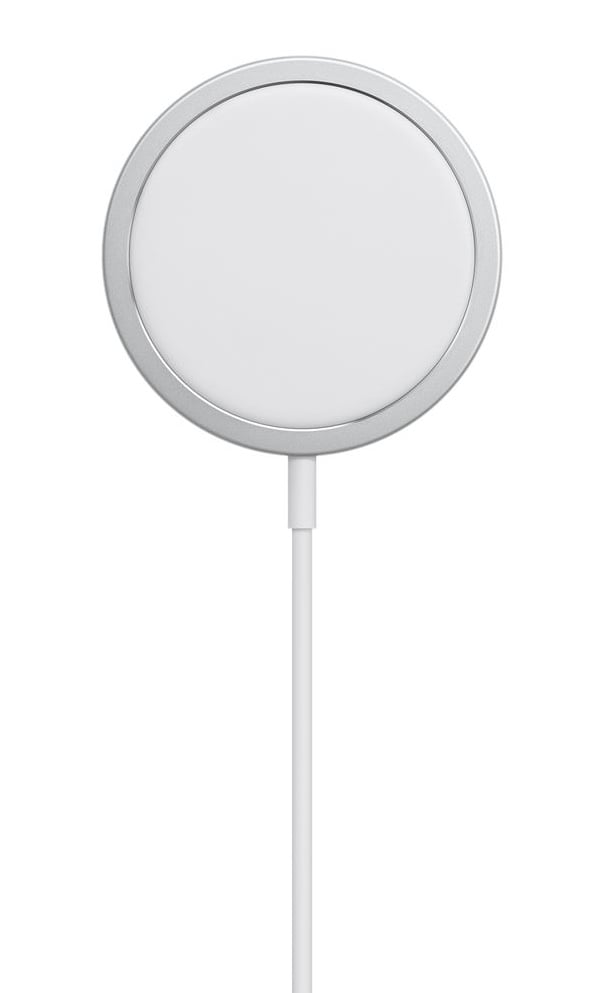Iphone Case and Charger
The Complete Guide to Apple MagSafe Chargers, Cases, and Accessories
Apple’s iPhones and AirPods include the MagSafe charging feature, allowing them to charge without plugging a cable into the devices. While this is not technically “wireless” charging – the MagSafe charger still has a wire – this form of induction charging is practical and it means that you can charge multiple devices without cables.
MagSafe is also an accessory category for Apple, with a number of different cases available, several chargers, a battery pack, and the MagSafe wallet, a slim wallet you can attach to your iPhone to carry credit cards or cash.
In this article, I’m going to tell you everything about MagSafe: how it works, what you can charge with it, and which MagSafe accessories are available.
What is MagSafe?
Long-time Apple users will remember the power connectors that Apple used on certain laptops from 2006 through 2019. These connectors snapped onto a special power port on the laptops, and were designed so if you tripped over a power cable, it wouldn’t throw your expensive Mac to the floor, but rather detach safely.
Apple re-introduced this term in 2020 for chargers that work with the iPhone and with certain headphones. While the “Mag” part is still true, there’s not much that is “Safe” about it. But the name sounds impressive, and Apple already owned the trademark. Apple also brought the original MagSafe charging back in 2021, with the release of MacBook Pro models featuring the technology, which was also added to the MacBook Air it 2022.
MagSafe charging is a form of induction charging, and is compatible with Qi charging, a standard used by many tech firms to provide cable-free charging. Both of these use a pad with a transmitting coil, and a receiving coil in devices, to transfer electricity. The magnets in Apple’s MagSafe chargers, and iPhones, allow the charging to be more efficient, since they can align the two coils perfectly.
How is MagSafe different from Qi charging?

Both systems work in a similar way, but with MagSafe, you can charge your iPhone 12 or later at up to 25 W (the iPhone 15 and earlier can charge up to 15 W, and iPhone 12 mini and 13 mini can only change at up to 12 W), whereas Qi charging is limited to 7.5 W. Some phone brands allow for Qi charging at 10 W, but Apple limits its devices to 7.5 W, perhaps for safety or efficiency reasons. If you charge headphones, such as Apple’s AirPods or AirPods Pro, the maximum voltage is 7.5 W.
Qi charging has been available on iPhone models since the iPhone 8, and is limited to 7.5 W.
Apple recommends that you use a 30 W or greater power adapter with MagSafe chargers to get 25 W charges on iPhone 16 models, or a 20 W or greater power adapter in order to get the full 15 W charging rate on older phones.
A more recent standard, called Qi2, is built around Apple’s MagSafe technology, specifically ensuring that chargers snap into place with magnets. One problem with standard Qi charging is that, when the coils are not aligned between charger and device, a lot of energy is wasted, and charging is slower. The Wireless Power Consortium (WPC) will develop a standard for induction charging that requires this alignment for more efficient charging. So far, this standard has not been widely adopted,
What do you need for MagSafe Charging?
MagSafe charging requires a compatible iPhone – currently, the iPhone 12 or later – and a MagSafe charger. (The iPhone SE (3rd generation) is not MagSafe compatible.) If you want to charge your iPhone with a case, you have to have a compatible MagSafe case, which also contains magnets, laid out in a MagSafe Case Magnet Array. You can charge an iPhone on a Qi charger, but the voltage will be lower. And you can charge the following models of AirPods:
- AirPods Pro and AirPods Pro 2
- AirPods with MagSafe Charging Case (3rd generation)
- AirPods 4 with Active Noise Cancellation
- Wireless Charging Case for AirPods
Apple sells MagSafe chargers, as do some third parties, under Apple’s “Made for MagSafe” program. Other companies sell “MagSafe compatible” chargers, which use the Qi charging standard, which charges more slowly.
MagSafes chargers work with older iPhones – starting with the iPhone 8 – but only at the slower, 7.5 W speed.
MagSafe cases
As mentioned above, MagSafe cases have to contain a MagSafe Case Magnet Array, which you can see in this photo of Apple’s clear case for the iPhone 16. The round array magnet passes the charge through the case to the device, and the straight orientation magnet is there to ensure that some devices are lined up correctly.
10 products

